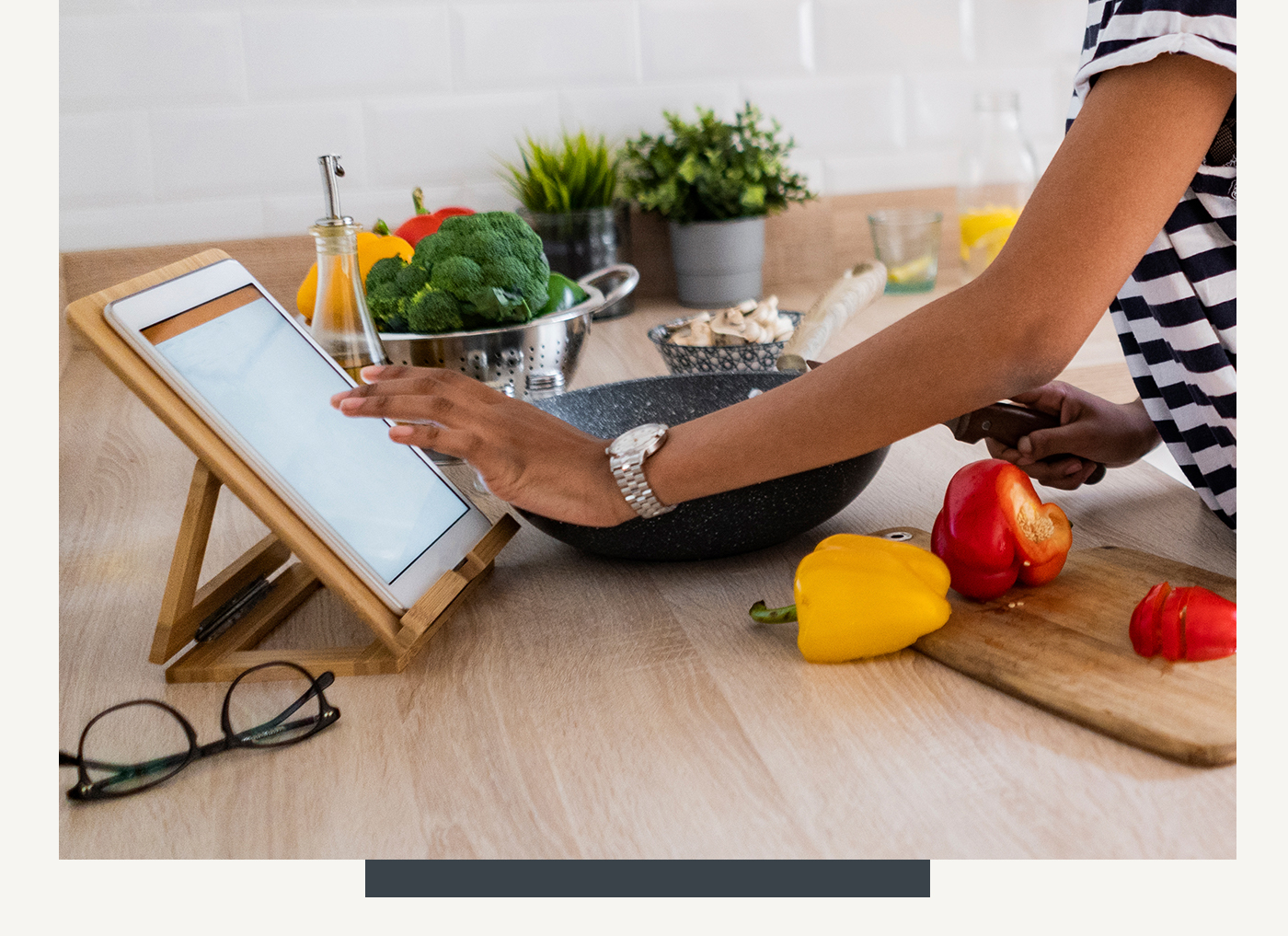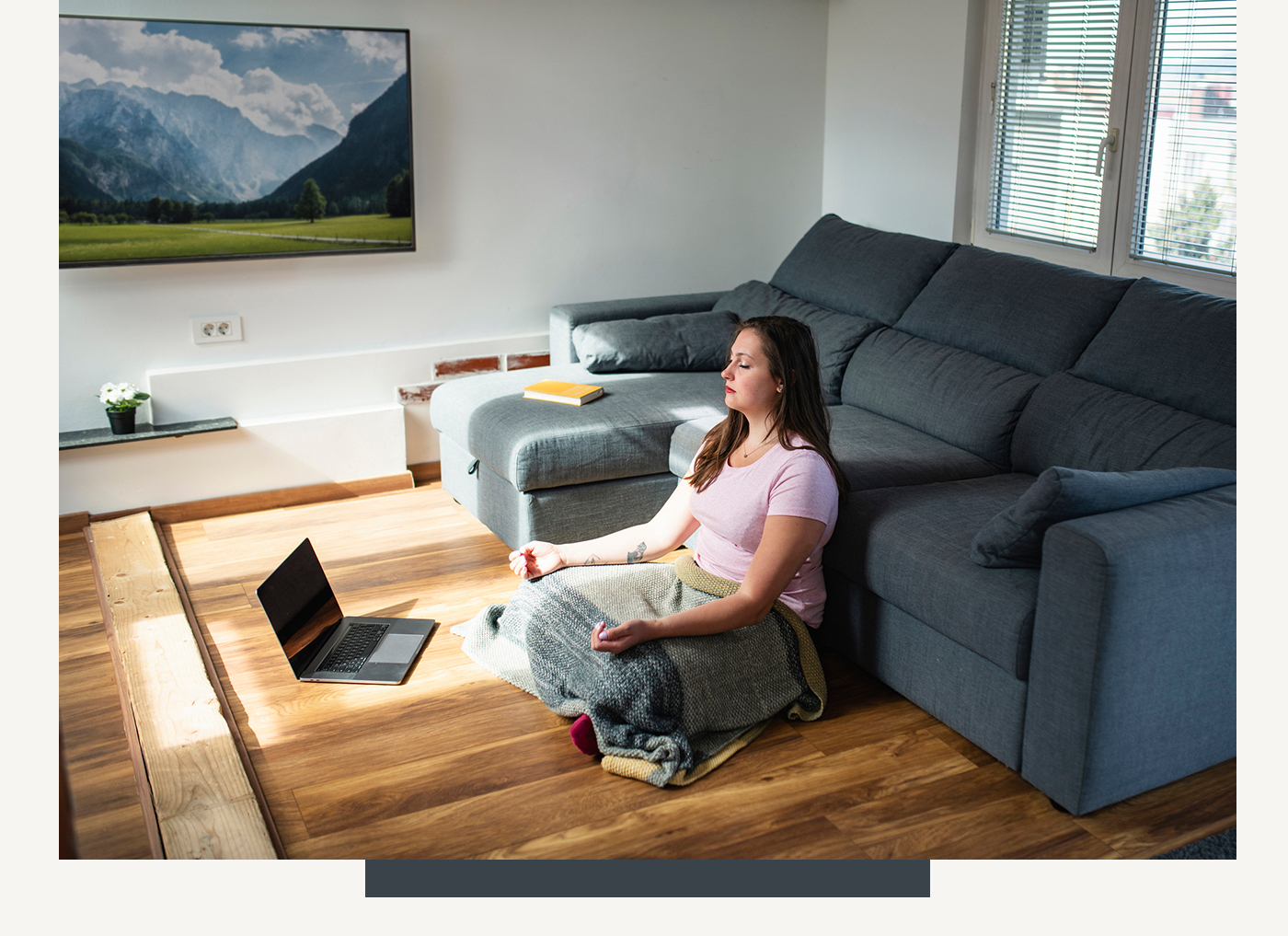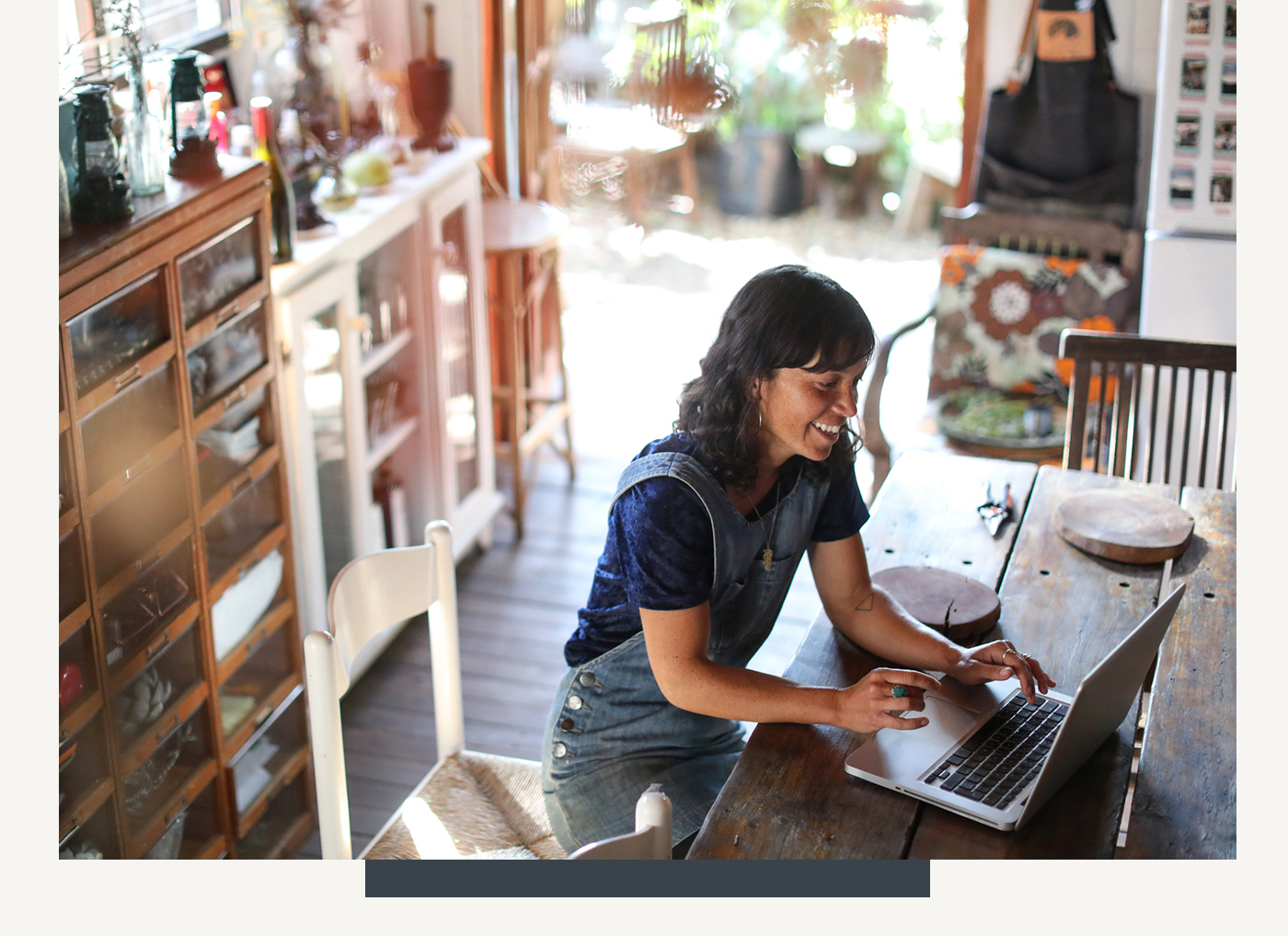COVID-19 Has Changed Every Aspect of Our Lives—Including Our Homes
Over the last six months, the COVID-19 pandemic has shape-shifted our universes, shrinking them down to the size of our homes. Many of us are working at home, working out at home, and only leaving for the “essentials,” which means that the spaces we once reserved for eating, sleeping, and bingeing Big Little Lies now serve entirely new purposes.
Spending so much time inside has, no doubt, made our physical spaces matter more, and it's brought one thing to light in a striking way: Wellness within our own four walls has come a long way from even a few years ago. “There’s [long] been an enthusiasm for the aesthetics of the home, but now there’s a much bigger interest in functional, wellness-centered design,” says Beth McGroarty, the director of research and PR at the Global Wellness Institute.
Quarantine has highlighted the impact that our homes can have on both our physical and mental health, showing us that crafting wellness-promoting spaces can ultimately pave the way for better well-being overall. Here, a look at how wellness has impacted our physical spaces and how health and home will be even more connected well into the future.
Wellness and tech aren't so at odds anymore
Traditionally, tech and wellness have been at opposite ends of the healthy-living spectrum. We’ve long been told to limit our screen time by keeping TVs, laptops, and cellphones out of the bedroom and disconnecting as regularly as possible. But as the pandemic forced us to keep our physical distance from the people and places we love, technology became an easy way to connect, even to our wellness practices.
- Beth McGroarty, Beth McGroarty is the director of research and public relations at the Global Wellness Institute. She has led strategic communications and media relations for the Global Wellness Institute since 2015, and also assists in Summit research projects.
- Jaya Rao, Jaya Rao is the co-founder and CEO of Molekule, a San Francisco-based science and clean air company that has developed a fundamentally new approach to cleaning air that involves breaking down and destroying pollution at a molecular level.
- Jessica Richards, Jessica Richards is a clean beauty expert and the founder of Shen Beauty, a clean beauty boutique in in Brooklyn, NY.
- John Adler, John Adler is the vice president of culinary and physical product at Blue Apron. His culinary resumé includes time in the kitchens at Per Se and Blue Hill Stone barns, as well as years cooking abroad.
For starters, digital fitness options have turned our living rooms into de facto workout studios—so much so that a new survey found that 59 percent of people don't plan to return to the gym even after the pandemic is over. According to Reddit, conversations in the r/homegym thread more than tripled between March and June 2020, compared to the same period in 2019, and people have proven to be willing to invest in the cause. Peloton’s stock ticked up nearly 46 percent between March 10 and July 10, Obé fitness saw 10 times as many app downloads in March as they did in February, and Mirror’s sales have reportedly doubled since COVID-19 set in, leading to a $500 million acquisition by Lululemon.

{{post.sponsorText}}
Outside of fitness, Headspace launched a feature that allows users to meditate with their loved ones from afar, and traditional tech companies have begun to launch health-centric home products of their own. In May, Samsung introduced Samsung Health, which allows users to access workout and meditation videos from their SmartTVs, and Roku followed suit in July by adding Peloton programming to its platform (Apple has also been rumored to be working on something big, too). “Given the current climate, we hope that the launch of Samsung Health makes it easier for our consumers to prioritize their physical and mental well-being on a daily basis,” Won-Jin Lee, executive vice president for Samsung Electronics, said in a statement.
These futuristic integrations have kept us connected to each other and to the wellness practices that we’ve long cared about in the physical world, proving that technology and healthy living may not be as at odds with each other as we’ve always thought.
Wellness-inspired design is finding a place in our own spaces
Between anxiety over the world’s uncertainty, rising health and financial concerns, and the general stressors associated with staying home, people have sought out their own corners of calm within the chaotic world. Cue the zen-inducing design found in many wellness studios making its way into people's living rooms.
“People are dedicating spaces to wellness, whether it’s a place to meditate or listen to music or do yoga or have a lot of plants,” says McGroaty. “They’re making wellness rooms for whatever they think calms them or helps them feel serene.
From March to July, Google searches for “meditation corner ideas” were up 90 percent, and on Etsy, there has been a 142 percent increase in searches for meditation cushions, pillows, or mats and a 286 percent increase in searches for yoga mats. “Everything that you would sort of think of as ‘spa-like’—candles, diffusers, more natural materials, meditation spaces—there’s a hunger for that,” says McGroarty. People are looking to make their homes feel more peaceful, and decorating them accordingly.
Additionally, people have turned to scent—which has been shown to have a strong connection to mood and emotion—as a way to mentally transport themselves to their “happy places,” even when they’re stuck at home. “People want to be connected in this sort of disconnected world that we’re in, and scent can do that in so many different ways,” says Givaudan senior perfumer Nicole Mancini. “Whether that’s recreating connections with loved ones we can’t see right now or memories of vacations or places we want to be, scent can really help to make this a time of reflection instead of a time of worry and anxiety.” The fragrance and home scent market saw a 116 percent sales increase, and Shen Beauty’s Jessica Richards confirms that these sorts of products have been flying off of the shelves.

Food has become a central source of confidence and connection
In the early days of quarantine, restaurants closed their doors to comply with social distancing orders, and even the most dedicated restaurant regulars were pushed to reevaluate their relationship with dining in.
“What we saw was an immediate turn toward self-reliance [in the kitchen],” says John Adler, the head chef and vice president of culinary at Blue Apron. According to a 1,005-person survey from Hunter, 54 percent of respondents said they’re cooking more than they were pre-pandemic. “People who had never meal-prepped before and thought that home cooking was set aside for a special occasion made it part of their routine, somewhat out of necessity but also out of stubbornness of thinking ‘I can do this, I can get through this, and I can take care of myself,’” says Adler.
People started posting pictures of their baked goods the way they used to share shelfies, Zoom cooking classes became a thing, and bread-baking grew to be so popular, there was a yeast shortage throughout the country. If the banana bread bonanza of March and April taught us anything, it’s that cooking through quarantine allowed people to feed (and connect with) their families while also filling their time, screen-free, with something that felt productive. According to a 2,000-person consumer brand poll, 72 percent of respondents said that food had been their favorite way to connect with loved ones during the pandemic, and 44 percent said they learned a new recipe. “People are starting to understand the value of home cooking,” says Adler. “Not just the financial value, but the qualitative value,” says Adler. “The emotional value of cooking has been rediscovered by a lot of people.”
Though the pandemic may have pushed people into the kitchen, their newfound love of cooking will likely keep them there long after it’s over. According to the Hunter survey, Fifty-one percent of people plan to continue cooking more once the pandemic ends, which means that looking ahead, we can expect to see some major changes in the kitchen.
“Whether it’s an investment in food or an investment in their space, I think there’s going to be a continued change in engagement regarding how food is a part of people’s lives,” says Adler. “I think that whenever the world returns to some sense of normalcy, the people who want to continue cooking will seek out technology that will allow them to easily control that while they’re getting back to being busy.”
Plants have given us something (besides ourselves) to care for
For city dwellers stuck inside with limited access to the outdoors (aside from weekend park visits and the occasional mental-health walk), feeling connected to the natural world outside of our homes has been a challenge. But continuous research has shown that spending time with plants is central to keeping things calm, cool, and collected. It makes sense, then, that as people are stressed to the max, they’ve decided to fill their home with leafy greens.
“We’ve heard a lot of the same story: ‘I had a couple of plants at home, but then COVID happened and I went from having three or four plants to having 20,” says Erin Marino, director of marketing at The Sill, who says the Sill’s website saw a 50 percent uptick in traffic in mid-March, around the time COVID-19 hit the U.S. “It’s something you can care for, it gives you something tangible to do, it makes a huge aesthetic enhancement to your space, there’s a level of affordability, and there’s a hobby aspect to it,” she says.
As trips outside have fewer and farther between, people have opted to bring the outdoors in—and for good reason. “Plants are a mood booster and a stress reducer,” says Erin Marino, director of marketing at The Sill. “We are wired to have this connection with nature, and without it we lose a little bit of ourselves.”
Aside from the wellness-enhancing properties that come along with owning plants, there’s also a community-building aspect associated with it that’s exploded online in the post-pandemic world. #BlackWithPlants has been a trending topic on Instagram, and conversations in Reddit’s r/houseplants thread doubled between March and June 2020 when compared with the same period in 2019 (posts in the r/gardening thread were also up 64 percent).
“The plant community has been around for a very, very long time…but now we’re seeing millennials get into the digital world of plants,” says Marino. “Older generations might have already been in these Facebook groups [on plant care that The Sill created], but I would say it’s expanding.” People are sharing their plant success stories, offering tips, and helping one another succeed in caring for their green babies. COVID-19 birthed an entirely new generation of plant parents who now not only have something to care for, but a community of people to care with.

Our homes will only continue to get healthier well into the future
As more and more people realize how much our homes impact our health, (whether we’re in a pandemic or not), cleanliness in the air and beyond will become a non-negotiable. Looking to the future, “there will be a much bigger function on the purity of what I call the ‘home biome,’” says McGroarty. “There's a recognition that because indoor spaces can be contagious environments that homes themselves can actually be a much more powerful weapon in fighting contagions. There's going to be a lot of innovation around purification technologies to make indoor spaces much more healthy and well for people.”
Air purification, for example, is likely to become commonplace in homes across the country. “In China, air purification is a standard household appliance, and I think based on what you’re seeing here with the pandemic, you’re seeing a lot of that come to the forefront of our consciousness—we’re realizing that we need this just like we need our water filtered,” says Molekule's CEO and co-founder Jaya Rao. “You wouldn’t drink dirty water, so why would you breathe dirty air?”
In addition to investing in cleaner at-home air, design elements specifically crafted for keeping things clean will soon become the norm. Antimicrobial surfaces, like cork and copper, are rising in popularity, and even smarter new tech is on the way. “People are creating materials that inhibit the growth of bacteria, as well as self-sterilizing materials,” says McGroaty. “Researchers and designers are working on door handles and surfaces that self-sterilize constantly so that you don’t have to have a frenzied wiping down process.”
Homes may also start to have antibacterial “gateway spaces” in their entryways, which will allow people to remove and disinfect things from the outside world—like their shoes or groceries—before germs have the chance to make it into their living spaces. “So you come home and place things in this gateway space, which may even have sterilizing UV technology,” says McGroaty. The concept of a “transition point” is borrowed from Japanese design, and the high-tech, disinfecting elements make it more practical than ever for the post-COVID world.
Think of this tech, and the iterations that could happen in the future, as the equivalent of washing your hands for your home: It’s the least you can do to ensure it stays healthy. Because the world outside of our own four walls is changing, but there's one silver lining: It’s made our own little worlds inside of them a whole lot healthier.
Loading More Posts...
